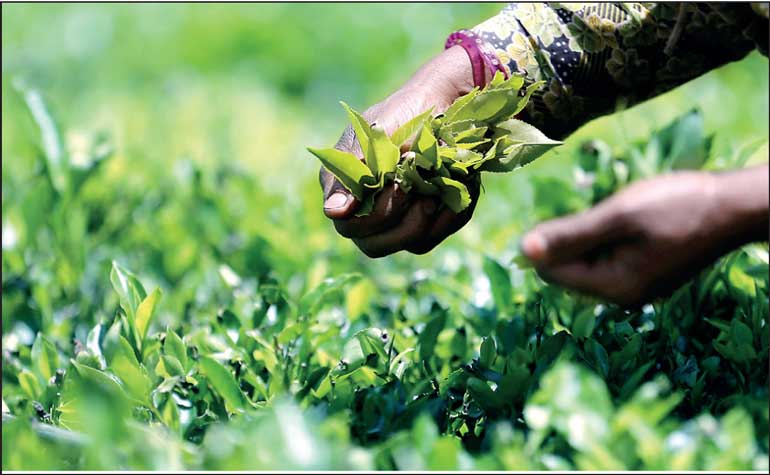Thursday Apr 24, 2025
Thursday Apr 24, 2025
Wednesday, 17 January 2024 00:05 - - {{hitsCtrl.values.hits}}

Sri Lanka’s tea crop improved marginally in 2023, reflecting the struggle for recovery after detrimental policy decisions and climate change.
The cumulative production for the year 2023 was 256.04 million kilos, registering an increase of 4.20 million kilos compared with 251.84 million kilos in 2022.
Data analysed by Forbes and Walker Research said all elevations have shown positive variances in the year 2023 aside from the low-grown elevation in comparison with the corresponding period of 2022.
However, it noted that compared to 299.49 million kilos in 2021, cumulative production of 2023 shows a decrease of 43.45 million kilos. On a cumulative basis, all elevations also show a decrease over the corresponding period of 2021.
High-grown elevation produced over 57.4 million kilos up by 2.50% year-on-year (YoY) whilst, medium elevation production was 41.29 million kilos up by 6.27% YoY and green tea production was at 2.28 million kilos up by 26.17% YoY. The low-grown elevation crop was down by 0.07% YoY to over 155 million kilos.
Sri Lanka was optimistic that the tea output will exceed 260 million kilos by the end of 2023 recovering from the 26-year low in 2022.
In December 2023, tea production increased mere 0.51% YoY to 19.81 million kilos vis-à-vis 19.71 million kilos of December 2022.
Forbes and Walker Research confirmed that in December all elevations except for the low grown have shown an increase in comparison with the corresponding period of 2022. However, it said compared to 20.52 million kilos of December 2021, the production of December 2023 still shows a decrease of 0.71 million kilos.
High-grown elevation produced over 4.46 million kilos up by 1.62% YoY whilst, medium elevation production was over 2.9 million kilos up by 2.38% YoY and the production of green tea was at 180,806 kilos up by 8.17% YoY. The low-grown elevation crop was down by 0.42% YoY to over 12.25 million kilos.
Sri Lanka Tea Board Chairman Niraj de Mel outlining plans for 2024 insisted on the need for a strategic, unified approach to achieve common industry objectives, emphasising the importance of collaboration over working in isolation.
Discover Kapruka, the leading online shopping platform in Sri Lanka, where you can conveniently send Gifts and Flowers to your loved ones for any event including Valentine ’s Day. Explore a wide range of popular Shopping Categories on Kapruka, including Toys, Groceries, Electronics, Birthday Cakes, Fruits, Chocolates, Flower Bouquets, Clothing, Watches, Lingerie, Gift Sets and Jewellery. Also if you’re interested in selling with Kapruka, Partner Central by Kapruka is the best solution to start with. Moreover, through Kapruka Global Shop, you can also enjoy the convenience of purchasing products from renowned platforms like Amazon and eBay and have them delivered to Sri Lanka.
Discover Kapruka, the leading online shopping platform in Sri Lanka, where you can conveniently send Gifts and Flowers to your loved ones for any event including Valentine ’s Day. Explore a wide range of popular Shopping Categories on Kapruka, including Toys, Groceries, Electronics, Birthday Cakes, Fruits, Chocolates, Flower Bouquets, Clothing, Watches, Lingerie, Gift Sets and Jewellery. Also if you’re interested in selling with Kapruka, Partner Central by Kapruka is the best solution to start with. Moreover, through Kapruka Global Shop, you can also enjoy the convenience of purchasing products from renowned platforms like Amazon and eBay and have them delivered to Sri Lanka.